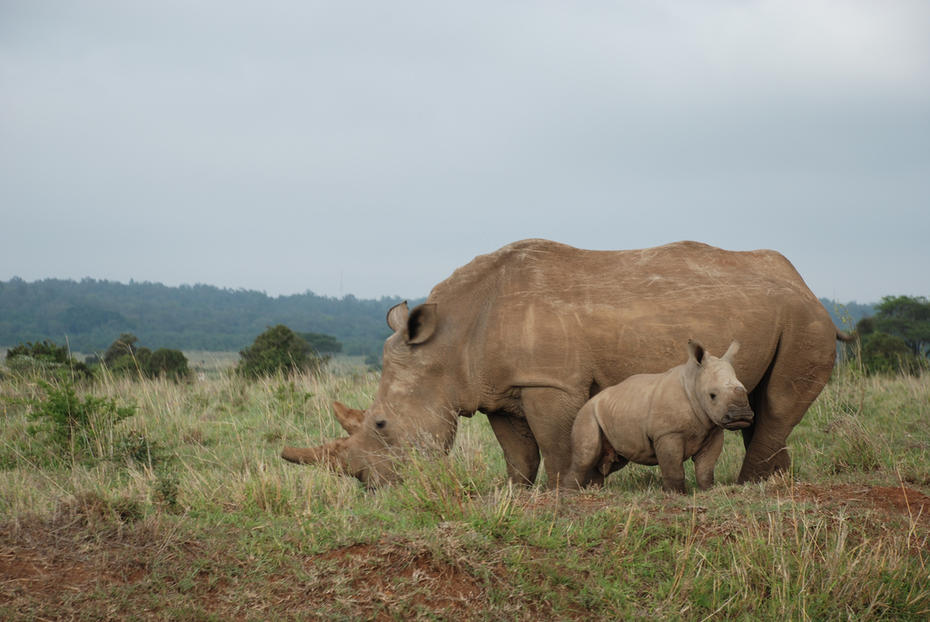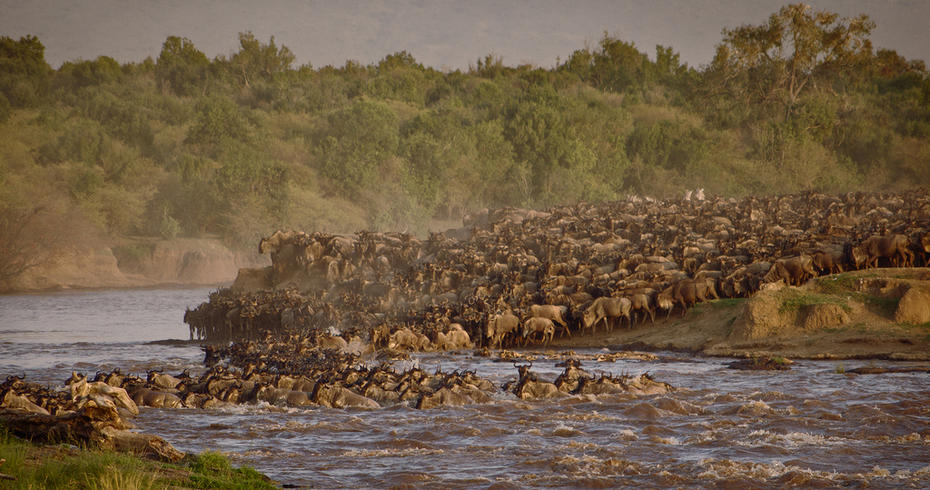Conflicts between humans and wildlife simmer around the globe, but nowhere are the elbows sharper than along the perimeter of Kenya’s Nairobi National Park, home to lions, zebra, leopards, rhinoceroses, and many other at-risk species. It is East Africa’s first national park, and it hosts more than 100,000 visitors annually. The rhinos born here help stock other rhino populations around the country, and the zebra and wildebeest migration that passes through the park every year is one of the largest on the continent.
But the struggling wildlife reserve is caught in a tightening noose, bounded on the north by the sprawling capital city and hemmed into the south by increasingly privatized, subdivided, and fenced-in plots. The geography of Nairobi National Park has always been problematic, but its slow descent from a legitimate reserve to a naturalistic zoo serves as a reminder that money and development trump wildlife—not just in Africa but also around the world.
LIVING IN NAIROBI’S SHADOW
The park’s northern border is just six miles from downtown Nairobi, which means the city’s suburbs are pushed flush against the wildlife reserve.
A decade ago, about two million people lived in Nairobi. Today, there are 3.5 million residents, many of them young and crowded into slums. With the population projected to hit six million in 10 years, the city’s infrastructure is plainly inadequate—and Nairobians demand improved housing, better sewage management, reliable transportation, and many basic services that Westerners take for granted. In May, rain brought the city to a standstill, as cars were submerged in five feet of standing water due to poor drainage. Last year, female residents of a notorious slum marched through the streets to protest the lack of toilets.
These needs are difficult to ignore. So when a transportation project came along to expand infrastructure, the country went ahead with it—even if it would come at the expense of wildlife habitat. The idea was to build a highway bypass to relieve traffic congestion in Nairobi. In the original plans, the roadway would skirt the perimeter of the national park. Before construction could begin, however, some shady deals between private landowners rendered the route unfeasible. Illegal buildings sprang up, and the Kenyan government decided it would be easier to simply re-route the road through the park’s northwestern corner. In 2013, a coalition of NGOs won its legal challenge to the new route, but construction on the portions of the bypass outside the park continues while negotiators seek a solution.
In the meantime, the government has announced plans to build a railway to carry both cargo and passengers. In a compromise with wildlife interests, the portion that passes through the park’s northeastern corner will be elevated in an attempt to minimize the disruption to wildlife and potential collisions with animals. The arrangement is far from ideal, though.
“Sometimes, you must accept what cannot be changed,” a park warden told the Associated Press about the impact of development. “Many times, you are just trying to see how to mitigate and how to reduce.”
A roadway here. A railroad there. Housing developments springing up around the edges. It’s very difficult to see how to maintain the integrity of Nairobi National Park over the long term. “Many in the government view the land as vital,” says Moses Okello, director of the East Africa Center at the School for Field Studies. “Conservation priorities do not have the same weight as the development of infrastructure, land for housing, or the expansion of industry.”
CUT OFF FROM ATHI-KAPITI
The juxtaposition of wildlife and the city make the northern edge of Nairobi National Park a high-profile conservation cause, but many experts say this is actually the best-protected portion of the park. “The existential threat is the southern corridor,” says Mayank Vikas, a graduate student at the University of Michigan, who studies the interactions of public parks with urban settlements.
While fences surround portions of the park’s northern, eastern, and western borders, the southern end opens to the Athi-Kapiti plains, a vast landscape of traditionally pastoral lands populated by the semi-nomadic Masai people. (British settlers built Nairobi National Park on historically Masai land in 1946.) The wildebeest, zebra, and other animals that migrate into and out of the park pass through these plains.

During the last two or three decades, however, much of the land to the park’s south has shifted from communal Masai ownership to private hands, with plots being sold to miners and farmers. Much of the land still used for cattle grazing is now fenced in, and permanent human settlements have sprung up in the plains near the edges of the park. “Companies and universities are taking huge chunks of land,” Okello says. “The land is being consumed every single day by buildings and flower plantations. I think that, in all honesty, Nairobi National Park will soon be completely isolated.”
The changes, which have altered or prevented natural migrations, represent a threat to the survival of the animals as well. According to 2013 United Nations report, the area’s wildebeest migration has declined by more than 90 percent between 1978 and 2011. “If corridors are not protected, and the animals have less and less space,” Vikas says, “on a long-term basis, every species could have to be protected in zoo-like conditions.”
Conservationists have fought to protect the Athi-Kapiti plains, but they simply don’t have the resources. Beginning around 2000, Friends of Nairobi National Park and the African Wildlife Foundation paid the Masai to keep their land open to migration. It worked—the payments kept 90,000 acres of land fence-free. However, in 2013, the project ran out of money, and an additional 90,000 acres was left on the waiting list, with owners open to conservation but now lacking the incentive. “The Masai want to preserve the grasslands they have,” Vikas says, “but they have problems with drought and climatic change. It’s every man for himself, unfortunately.”
Okello, who sees the changes on the ground every day, says the prospects for saving the park are dimming. “We tried several approaches, like buying [land] at market rates, but they failed,” he says. “The migration route will be cut, and Nairobi National Park will become just like a zoo.”
The next decade will determine the park’s fate. Okello’s prediction may come true—it may already be too late to save this wildlife reserve on the edge of Nairobi. And there are other parks all over the world that already have, or soon will, meet a similar fate. Human settlements are surrounding Amboseli National Park in southern Kenya, and Asola Bhatti Wildlife Sanctuary, just outside of Delhi, has already succumbed to development.
But there is hope yet. “International pressure is important,” Okello says. “Every tourist coming to Kenya is important. You can raise your voice through social media and appeal to the government.”
Also, if you travel to Africa, visit a conservancy either in addition to or instead of a national park. These private reserves are established by landowners who commit their land to both pastoral and conservation use. They provide a financial incentive to keep fences off migratory lands.
“Nairobi National Park is part of a much larger ecosystem—it cannot all be a protected area that people cannot enter,” Vikas says. “There has to be a way for people and wildlife to live side by side, as they have done in the past.”
Plus, you can’t put this in a zoo.

This post originally appeared on Earthwire as “The Closing of Nairobi National Park” and is re-published here under a Creative Commons license.



